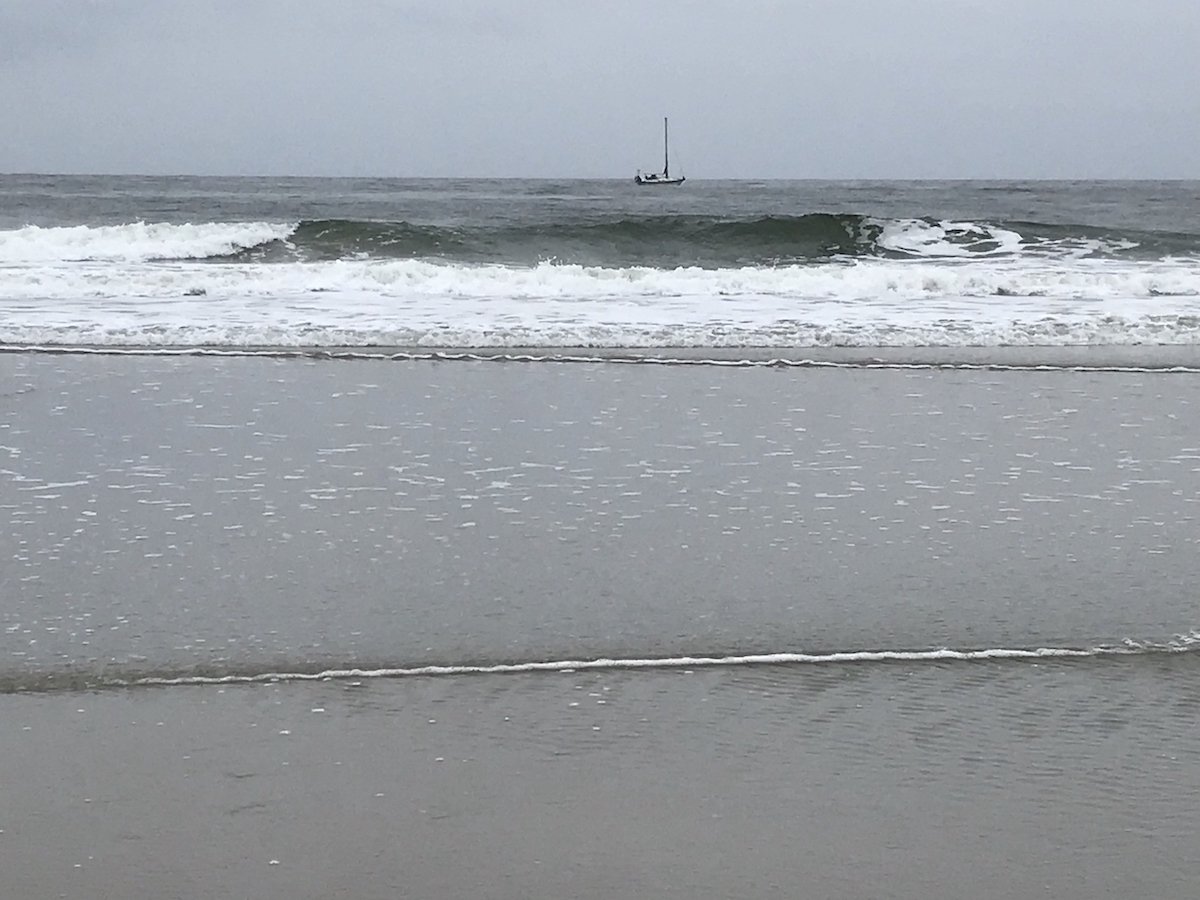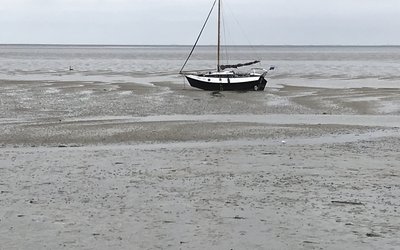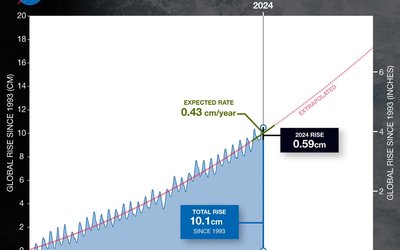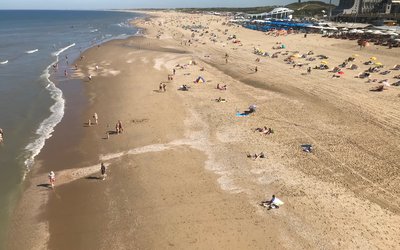Coastal erosion and coastal floods
What high-end sea level rise should we plan for? 1.55 m by 2100, scientists conclude
November 6, 2022

We need figures to work with
What is a credible high-end estimate for sea level rise in – say – 2100 or 2300? Practitioners (and decisionmakers) working on adaptation planning need answers to these questions. When designing flood protection, for instance, they want to be sure that they are taking the right measures in time. On the other hand, they don’t want to do more than is needed. Science is clear about the range of global sea level rise that the world most likely will face in 2100. There is a lot of debate, however, about the unlikely, high-end estimate of sea level rise that the world might face by then, and this high-end estimate generally guides adaptation planning. A group of experts on sea level rise and practitioners, therefore, joined forces, studied all the available information on sea level rise projections, and quantified high-end – plausible worst case – estimates practitioners can work with.
Physically plausible
These estimates are based on current knowledge of all the processes that contribute to sea level rise and on projections of sea level rise that are – according to them – ‘physically plausible’. In their approach, ‘projections supported by multiple lines of evidence and eliciting broader confidence from the scientific community are of greater value as compared to projections further along the tail that feature fewer lines of evidence, and hence have lower confidence.’ They focused on 2100 and 2300 and looked at the results of two scenarios of climate change, a modest and a strong one.
Sea level rise results from a number of contributing components: thermal expansion of the ocean, melting of glaciers, and of the Greenland and Antarctic ice sheets, and changes in the volume of water stored on land. The contribution of all these components have been assessed separately. The result are estimates of the high-end of projected global sea level rise. The results do not include processes that contribute to regional variations in sea level. Also, vertical land motion is not included; the results are absolute sea level rise.
Glaciers
Glacier-melt contributed 0.7 mm/year to sea level rise over the period 2010-2018. The experts conclude that, by 2100, the contribution of glaciers to the high-end estimate sea level rise may be 0.15 m (modest global warming) up to 0.27 m (strong global warming). By 2300, this contribution may be 0.28 m to 0.32 m.
Greenland
Ice mass loss from Greenland contributed 0.7 mm/year to global sea level rise over the period 2010-2019. For 2100, the contribution of Greenland to the high-end estimate varies in between 0.10 and 0.29 m. For 2300, this range is much larger: 0.39 to 2.5 m.
Antarctica
Ice mass from Antarctica contributed 0.4 mm/year to global sea level rise over the period 2010-2019. For 2100, Antarctica is projected to contribute in between 0.39 m and 0.59 m to the high-end estimate. For 2300, the projection of the possible contribution of Antarctica is highly uncertain. This uncertainty is due to the fact that scientists do not understand well enough the dynamics of ice flow on Antarctica and how the major ice shelves may break up to estimate the possible contribution of ice loss from Antarctica to sea level rise. The Antarctic component is the most uncertain one of all components of sea level rise. Hence the large range of the contribution of this component to the high-end estimate by 2300: 1.35 m to 6 m.
Thermal expansion
The warming of the oceans leads to thermal expansion of ocean water and hence to sea level rise. The contribution of this component to the high-end follows directly from the thermal expansion of sea water and is estimated to be in the range 0.18 m – 0.36 m by 2100, and 0.35 m - 1.51 m by 2300. The large range for 2300 reflects the large range of projected global warming in the scenarios: +2 ̊C for the moderate and +8-10°C for the strong scenario.
Changes in water volume stored on land
The contribution of water lost from land depends on the way we use and manage freshwater resources on land – for instance groundwater abstraction and water stored in reservoirs behind dams – and climate change. This contribution is small and will remain small in the future. Its contribution is estimated to be 0.04 m by 2100 and 0.10 m by 2300.
The sum of all these components
Now that all components have been quantified it seems relatively simple to just add them up. Unfortunately, it is more complicated than that. There will be some dependence between these contributions, and you should correct for that. The experts decided not to get to the bottom of this and just make two calculations: one assuming total independence and one assuming total dependence.
- Assuming total independence of these contributing components, the high-end estimate of global sea level rise is 0.72 m - 1.27 m for 2100, and 2.2 m - 8.6 m in 2300.
- Assuming total dependence, the range is larger: 0.86 m - 1.55 m for 2100, and 2.5 m - 10.4 m for 2300.
The results for these two assumptions should be interpreted as lower and upper end estimates of projected high-end sea level rise. Since working with different ranges may be complicated in adaptation planning, the experts advice practitioners to simply average these lower and upper estimates and use the average for adaptation planning.
And what about the time in between 2100 and 2300?
For decisionmakers and practitioners 2300 is very far into the future. 2100, on the other hand, is too early a time horizon for many aspects of adaptation planning. High-end estimates for some time in between – say 2150 – would be nice. Unfortunately, that’s where it becomes complicated, and this is due to uncertainties in Antarctic ice mass loss. This century, a major contribution of ice shelves breaking up or an acceleration of ice flowing into sea is unlikely. That’s why the contribution of Antarctica to the high-end estimate by 2100 is relatively small. By 2300, according to the experts ‘the major ice shelves are assumed to have broken up, and sufficient time has passed to allow for accelerated Antarctic ice mass loss’. But to what extent these processes are already effective by 2150, scientists do not know. So it is not yet possible with current knowledge to give decisionmakers and practitioners figures to work with on a time scale of 100 years or so.
Not cast in concrete
More knowledge will become available from science on the contributions of all components to sea level rise in the coming years. The experts, therefore, recommend that their storylines are updated at regular intervals, reflecting the evolution of the body of knowledge. The upper end of 1.55 m sea level rise by 2100 is not cast in concrete. It is just the best estimate scientists currently can make.
Source: Van de Wal et al. (accepted for publication). Earth’s Future (in press).








